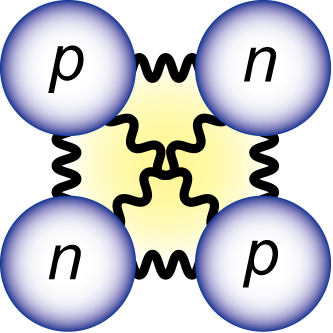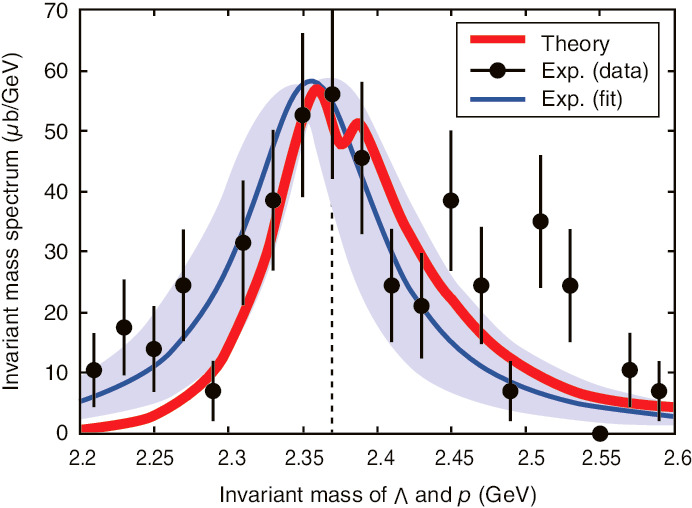
Fig.3-4 A bound state of two protons and two neutrons

Fig.3-5 A bound state of an antikaon and two nucleons

Fig.3-6 Experimental and theoretical results of the Λp invariant-mass spectrum
Typical atomic nuclei are composed of two types of particles, protons and neutrons, as shown in Fig.3-4, and are bound due to the nuclear force between them. Because both protons and neutrons are constructed only out of up and down quarks, they resemble each other except for their electromagnetic properties. Due to this fact, we use the term “nucleon” to refer to a generic particle, whether a proton or a neutron, making up a nucleus.
Our research interest is in how the nuclear force changes if we replace one of the up or down quarks inside a nucleon with a quark of a different “flavor”, such as a strange quark. We refer to such an interaction between particles containing quarks of different flavors as the strong interaction, which is an extension of the nuclear force. Up until now, the strong interaction has been intensively studied in both theory and experiment.
It is well known that the nuclear force is attractive. However, in general, the strong interaction may be attractive or repulsive with various strengths depending on the flavors of quarks inside particles. Among many combinations of particles, that of a K- meson (composed of strange and anti-up quarks) and protons has attracted much attention because their interaction is expected to be strongly attractive. Indeed, it has been theoretically predicted that there exists a bound state consisting of a K- meson and two protons (the so-called K-pp state, or more precisely the ![]() bound state), as shown in Fig.3-5.
bound state), as shown in Fig.3-5.
In order to discover this K-pp state experimentally, we need a facility in which strange quarks are copiously generated. The Japan Proton Accelerator Research Complex (J-PARC), located at the Tokai campus of JAEA, is the best facility for searching for the K-pp state. Using the high intensity K- beam at the hadron hall of J-PARC, we bombarded a 3He target with 3.4 × 109 K-s and observed the K-3He→Λpn reaction. As a result, we found a peak structure around the K-pp threshold (2.37 GeV) in the invariant-mass spectrum of the Λp system, shown as the black points and blue band in Fig.3-6. This peak may be a signal of the desired K-pp bound state.
We further theoretically calculated the K-3He→Λpn reaction to investigate the origin of the observed peak structure at J-PARC. Assuming that the K-pp state is generated, we obtained the thick red line in Fig.3-6, which qualitatively agrees with the experimental result. This strongly supports the possibility that the K-pp bound state was indeed produced in the J-PARC experiment.
This bound state is a new form of atomic nucleus composed of an antikaon (a “strange particle”) and two nucleons, bound by the strong interaction between them.